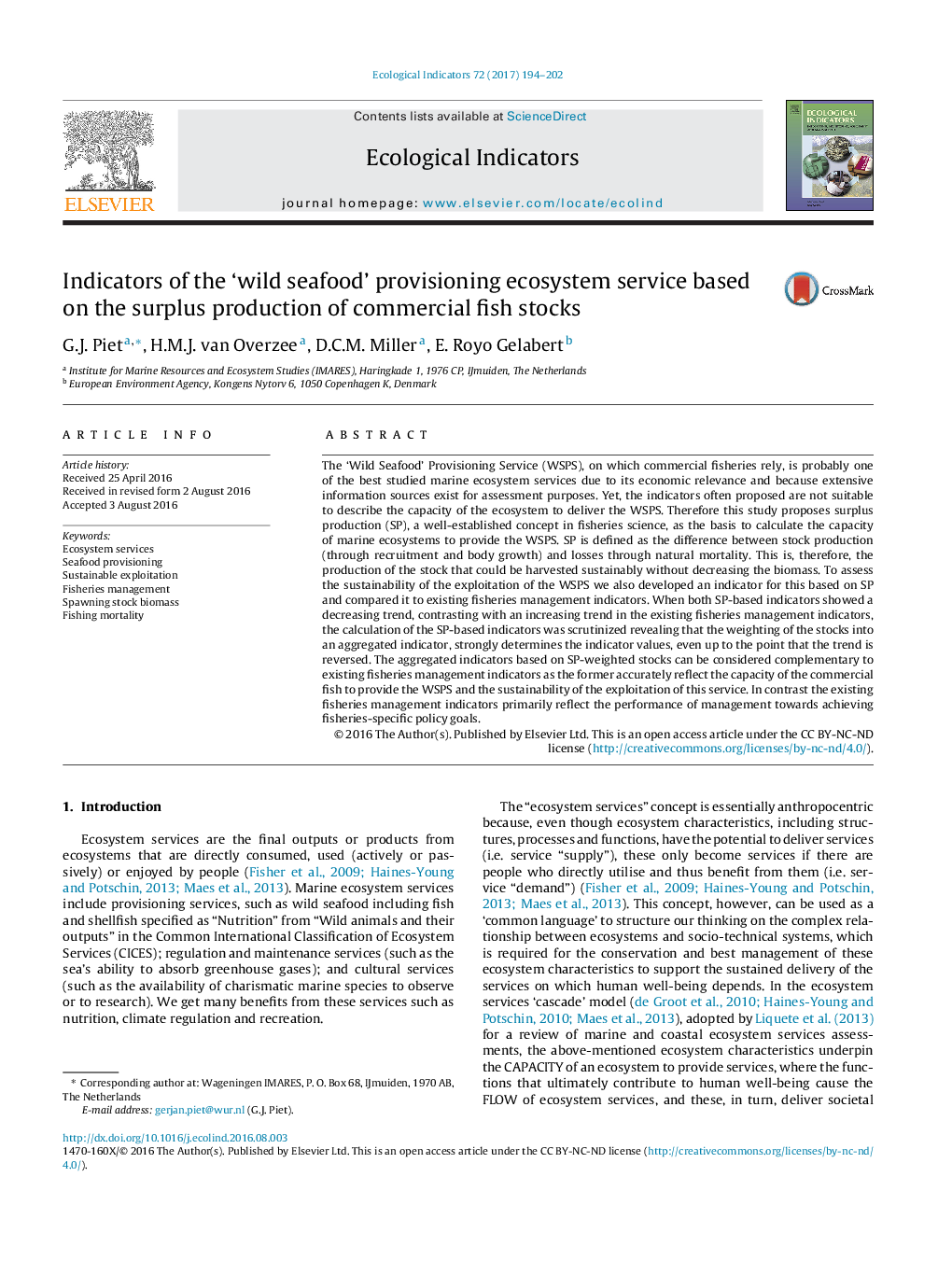| Article ID | Journal | Published Year | Pages | File Type |
|---|---|---|---|---|
| 6292734 | Ecological Indicators | 2017 | 9 Pages |
Abstract
The 'Wild Seafood' Provisioning Service (WSPS), on which commercial fisheries rely, is probably one of the best studied marine ecosystem services due to its economic relevance and because extensive information sources exist for assessment purposes. Yet, the indicators often proposed are not suitable to describe the capacity of the ecosystem to deliver the WSPS. Therefore this study proposes surplus production (SP), a well-established concept in fisheries science, as the basis to calculate the capacity of marine ecosystems to provide the WSPS. SP is defined as the difference between stock production (through recruitment and body growth) and losses through natural mortality. This is, therefore, the production of the stock that could be harvested sustainably without decreasing the biomass. To assess the sustainability of the exploitation of the WSPS we also developed an indicator for this based on SP and compared it to existing fisheries management indicators. When both SP-based indicators showed a decreasing trend, contrasting with an increasing trend in the existing fisheries management indicators, the calculation of the SP-based indicators was scrutinized revealing that the weighting of the stocks into an aggregated indicator, strongly determines the indicator values, even up to the point that the trend is reversed. The aggregated indicators based on SP-weighted stocks can be considered complementary to existing fisheries management indicators as the former accurately reflect the capacity of the commercial fish to provide the WSPS and the sustainability of the exploitation of this service. In contrast the existing fisheries management indicators primarily reflect the performance of management towards achieving fisheries-specific policy goals.
Keywords
Related Topics
Life Sciences
Agricultural and Biological Sciences
Ecology, Evolution, Behavior and Systematics
Authors
G.J. Piet, H.M.J. van Overzee, D.C.M. Miller, E. Royo Gelabert,
